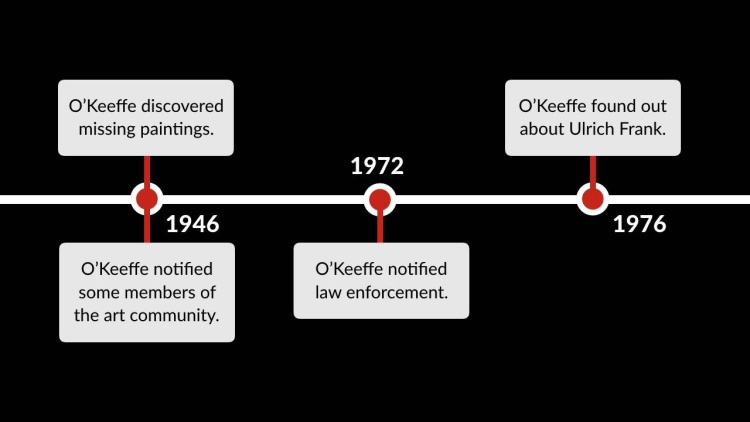O'Keeffe v. Snyder
New Jersey Supreme Court
416 A.2d 862 (1980)
- Written by Dennis Chong, JD
Facts
In 1946, Georgia O’Keeffe (plaintiff) noticed that three of her paintings were missing from a gallery, but she did not report the pieces stolen until 1972. In 1975, O’Keeffe learned that her paintings were in a gallery in New York, and in March 1976 she brought suit in replevin against purchaser Barry Snyder (defendant). Snyder impleaded Ulrich Frank, who sold him the paintings. Frank claimed that his father had possession of the paintings for over 30 years. Snyder moved for summary judgment. Snyder asserted that he was a purchaser for value, he had title by adverse possession, and O’Keeffe’s action was barred by the applicable six-year statute of limitations. O’Keeffe filed a cross-motion arguing that the paintings were stolen, she had rightful title, and the statute of limitations had not run. The trial court granted Snyder’s motion, holding that the six-year limitations period for replevin actions started to run at the time of the theft. The appellate court reversed, granting judgment for O’Keeffe on the grounds that (1) the paintings were stolen, (2) the limitations period was the same as the adverse-possession period, and (3) Snyder failed to establish adverse possession (which the appellate court concluded he had the burden to demonstrate). Snyder appealed to the New Jersey Supreme Court.
Rule of Law
Issue
Holding and Reasoning (Pollock, J.)
Dissent (Sullivan, J.)
Dissent (Handler, J.)
What to do next…
Here's why 899,000 law students have relied on our case briefs:
- Written by law professors and practitioners, not other law students. 47,000 briefs, keyed to 994 casebooks. Top-notch customer support.
- The right amount of information, includes the facts, issues, rule of law, holding and reasoning, and any concurrences and dissents.
- Access in your classes, works on your mobile and tablet. Massive library of related video lessons and high quality multiple-choice questions.
- Easy to use, uniform format for every case brief. Written in plain English, not in legalese. Our briefs summarize and simplify; they don’t just repeat the court’s language.





